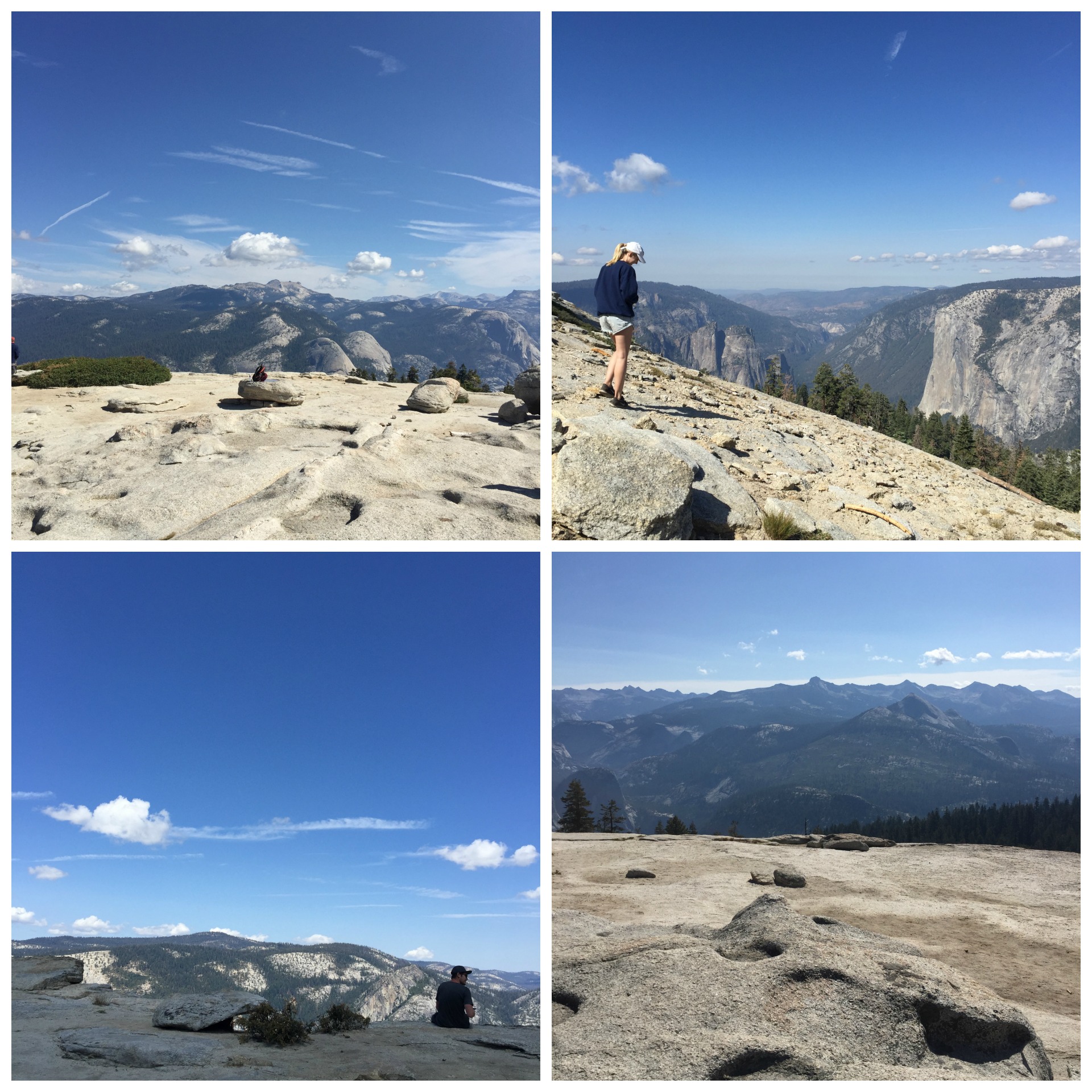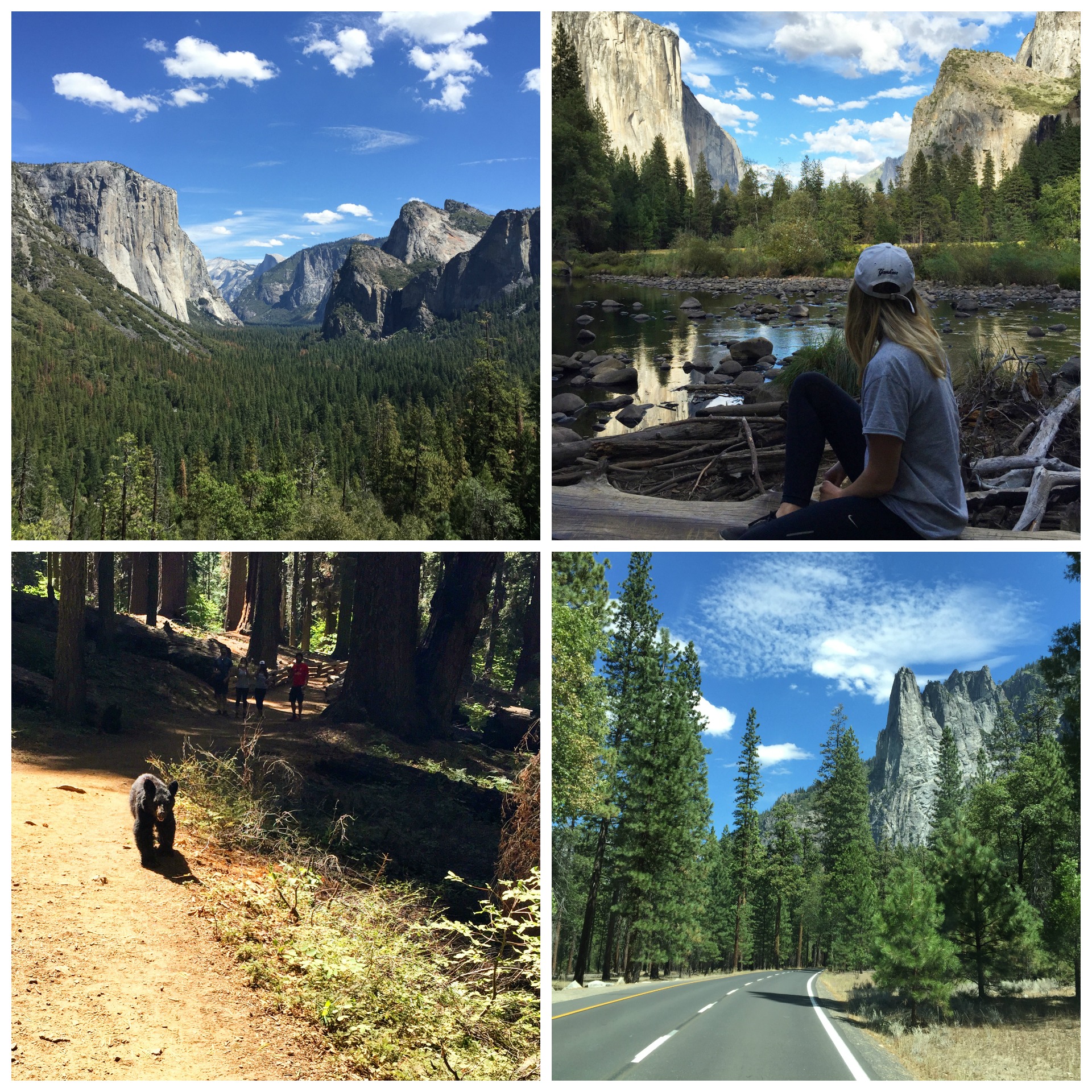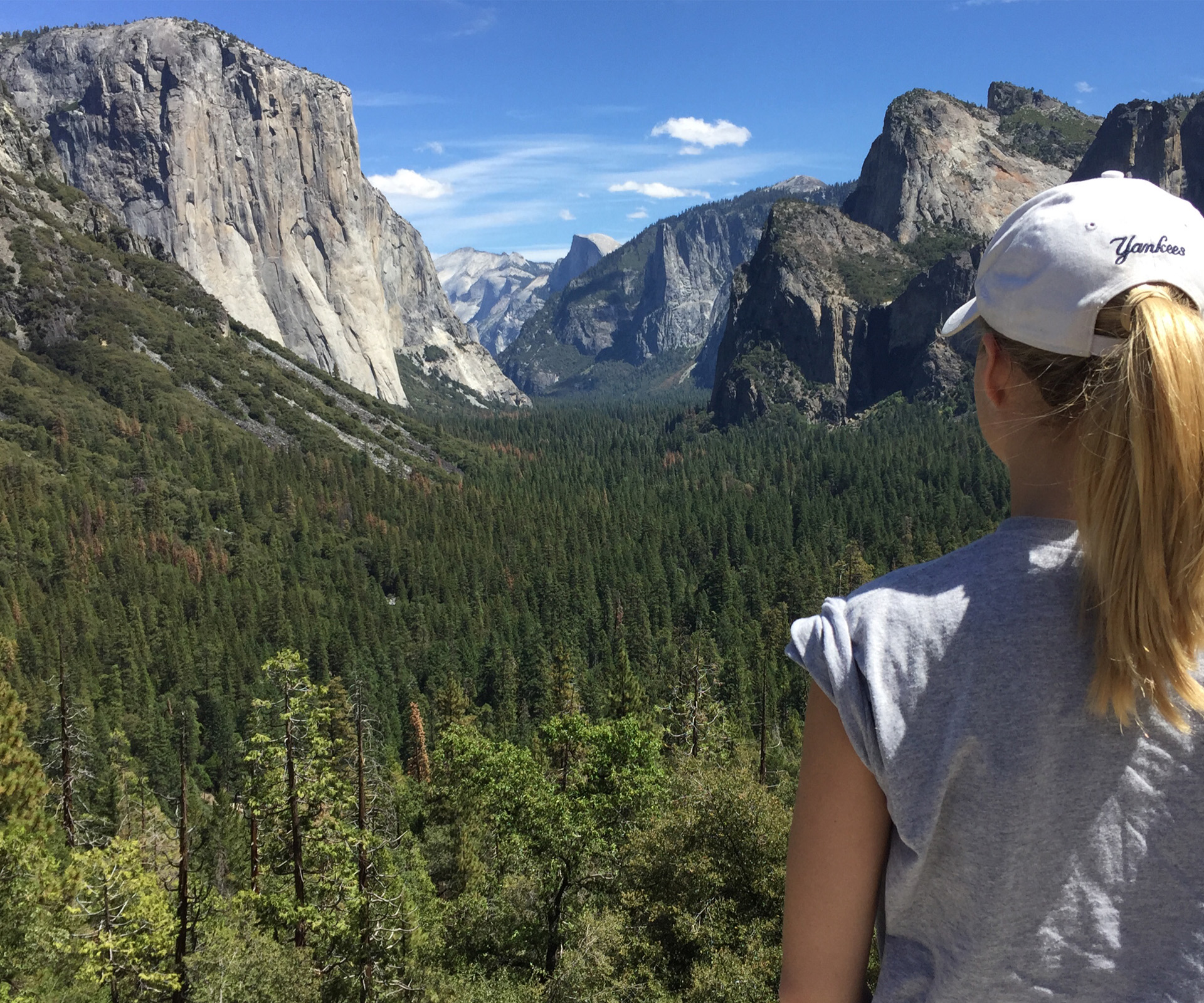8000 ft high, feeling small. As a dozen people slowly wander along the pebbled terrain – some stepping over boulders, others sitting on them – no one says a word. But that’s what they’re all feeling. Small.
“Make sure you take some time to enjoy this journey alone, as you’re bound to have a spiritual experience,” says Frank, our jovial tour guide moments before we start the hike.
Thinking I’m about to become the exception to the rule, I start hiking with the others, chatting and taking pictures of the black bear we acquaint along the trail. But here I now am, sitting on a rock in silence, looking into the 3000 square kilometre expanse ahead, and below.
Welcome to Sentinel Dome, where Frank is always right and silence is redefined. The clouds are the size of marshmallows and the pine trees mere pin-pricks in the valley below. It’s a view which takes your breath away but for some reason you remain conscious. A high of the aesthetic kind.
And it’s a feeling you’re left with at just one of the 1200 kilometres of hiking trails bringing four million visitors into Yosemite each year. Most come in the summer time from June through to September.

From honeymooners, to families, to camps of school kids, they all roll in in their buses or cars and enjoy hiking 8000 feet above sea level, climbing to reach waterfalls – some the size of 200 story buildings – riding bikes around the valley or swimming in the streams. The smart ones will do it all.
The absolutely insane ones (also known as rock climbers) will partake in one other recreational activity involving climbing El Capitan; a 914 metre face of granite, making it the largest monolith of granite in the world.
But for the sane, who don’t want to climb its face, it can be best viewed (in all its glory) from Tunnel View. The view has become one of the most photographed places in the world, and it’s Yosemite Valley’s best angle.
Frank whips our bus down the mountainside, along the tree-lined roads, eventually through a small, dark tunnel, before pulling a 180 degree turn into the carpark of Tunnel View. And as he turns off the ignition and straightens up his white cap he leans around his drivers seat to look at the group. And he says “this view.. this is why the word ‘awesome’ was created.”
And Frank was right, again.

To enjoy Yosemite in all its ‘awesomeness’ read on for where to stay, how to get there and what not to miss.
Stay
99 per cent of Yosemite’s visitors stay in the National Park each year with accommodation ranging from cabins to hotel rooms, and tents for those wanting a true outdoor experience.
Curry Village offer affordable lodging options from hotel style rooms to tent cabins.
Yosemite Bug Rustic Mountain Resort is another affordable option just outside the national park, with rooms ranging from hostel-style dorm accommodation to hotel-style cabins.
The Ahwahnee Hotel is for those wanting to treat themselves, with rooms averaging $US450.
High Sierra Camps offer “cosy dining tents” for those who don’t want to set up their own. Breakfast and dinner is fully provided too, but visitors are required to apply for the accommodation through a lottery system due to popularity. There are also 13 popular campsites both inside and outside the park for those wanting to pitch their own tent, but it’s best to reserve a spot prior to arrival.
What not to miss
You can’t visit Yosemite National Park without enjoying the views of Yosemite Valley (both from Valley View and Tunnel View) along with the unique views of the park seen at Taft Point and Sentinel Dome. You can choose both long or short hikes to these points.
Hire bikes at Yosemite Village to explore the lower terrain of the park, riding over bridges and alongside the streams flowing through the valley (which are beautiful to swim in also).
One other hike not to miss is the Mist Trail, which is a 22 kilometre round trip taking you past the most beautiful waterfalls – including Vernal Fall and Nevada Fall – at the base of Half Dome.
How to get there (including tours)
You can get to Yosemite National Park from San Francisco, Sacramento and Los Angeles all by car. It’s a three hour drive from San Francisco, a four hour drive from Sacramento and just over a six hour drive from LA.
Since December Qantas have re-introduced direct flights to San Francisco, making it much easier for Australians to get to Yosemite. See available flights direct to San Francisco here
Once you arrive at Yosemite, you can travel around the park by car (each car cost $US20 entry fee) and explore its wonders at your own pace, or you can take a one day tour with Extranomical Tours. They also do overnight tours, providing transport to Yosemite from San Francisco. TIP: Ask for Frank.
Yosemite Mountaineering School also offer guided climbs and hikes.
For more information visit:
Yosemite National Park Service




